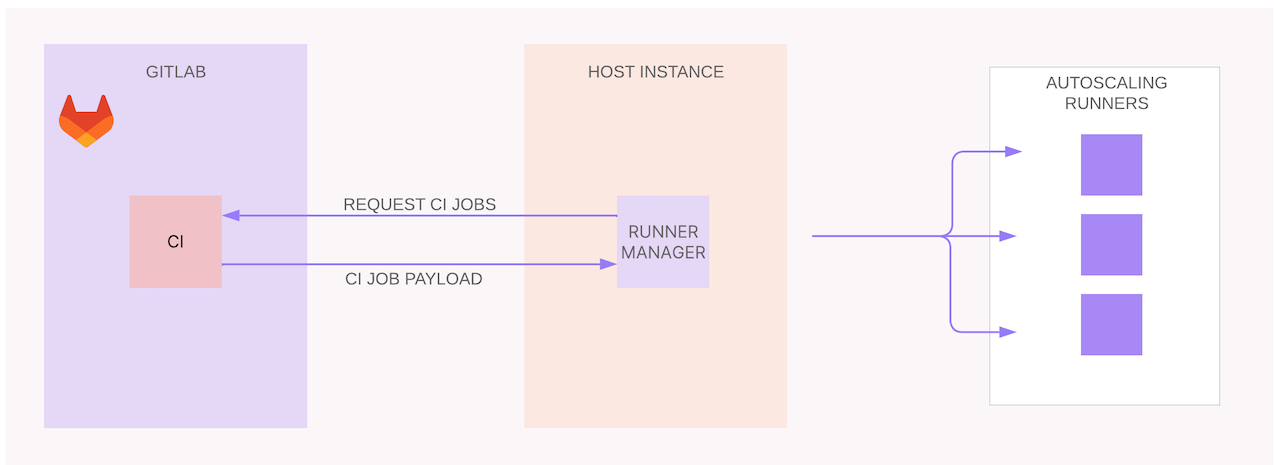GitLab Runner instance group autoscaler
- Tier: Free, Premium, Ultimate
- Offering: GitLab.com, GitLab Self-Managed, GitLab Dedicated
GitLab Runner instance group autoscaler is the successor to the autoscaling technology based on Docker Machine. The components of the GitLab Runner instance group autoscaling solution are:
- Taskscaler: Manages the autoscaling logic, bookkeeping, and creates fleets for runner instances that use cloud provider autoscaling groups of instances.
- Fleeting: An abstraction for cloud provider virtual machines.
- Cloud provider plugin: Handles the API calls to the target cloud platform and is implemented using a plugin development framework.
Instance group autoscaling in GitLab Runner works as follows:
- The runner manager continuously polls GitLab jobs.
- In response, GitLab sends job payloads to the runner manager.
- The runner manager interacts with the public cloud infrastructure to create a new instance to execute jobs.
- The runner manager distributes these jobs to the available runners in the autoscaling pool.
Configure the runner manager
You must configure the runner manager to use the GitLab Runner instance group autoscaler.
Create an instance to host the runner manager. This must not be a spot instance (AWS), or spot virtual machine (GCP or Azure).
Install GitLab Runner on the instance.
Add the cloud provider credentials to the runner manager host machine.
You can host the runner manager in a container. For GitLab.com and GitLab Dedicated hosted runners, the runner manager is hosted on a virtual machine instance.
Example credentials configuration for GitLab Runner instance group autoscaler
You can use an AWS Identity and Access Management (IAM) instance profile for the runner manager in the AWS environment. If you do not want to host the runner manager in AWS, you can use a credentials file.
For example:
## credentials_file
[default]
aws_access_key_id=__REDACTED__
aws_secret_access_key=__REDACTED__The credentials file is optional.
Supported public cloud instances
The following autoscaling options are supported for public cloud compute instances:
- Amazon Web Services EC2 instances
- Google Compute Engine
- Microsoft Azure Virtual Machines
These cloud instances are supported by the GitLab Runner Docker Machine autoscaler as well.
Supported platforms
| Executor | Linux | macOS | Windows |
|---|---|---|---|
| Instance executor | Yes | Yes | Yes |
| Docker Autoscaler executor | Yes | No | Yes |
